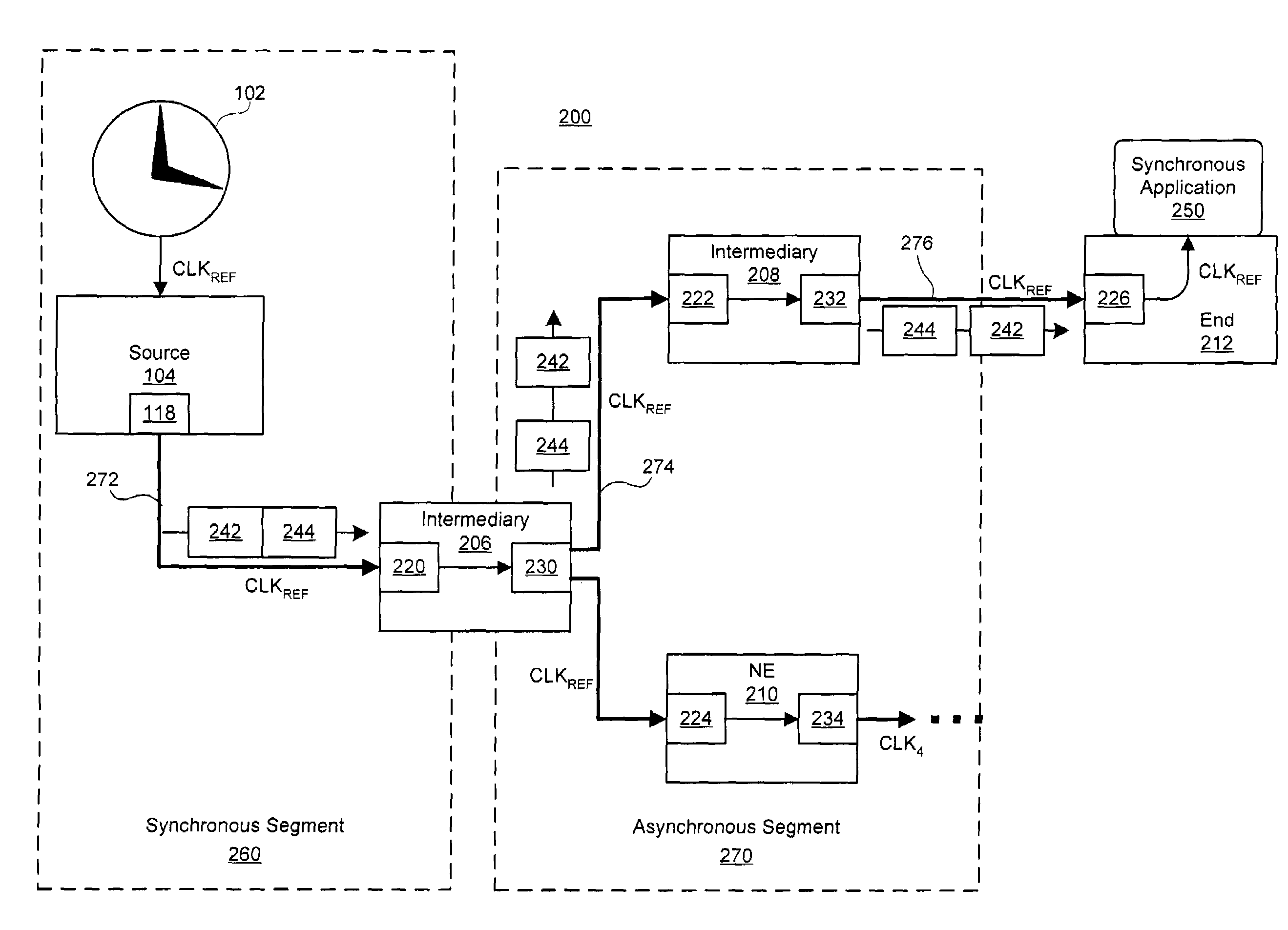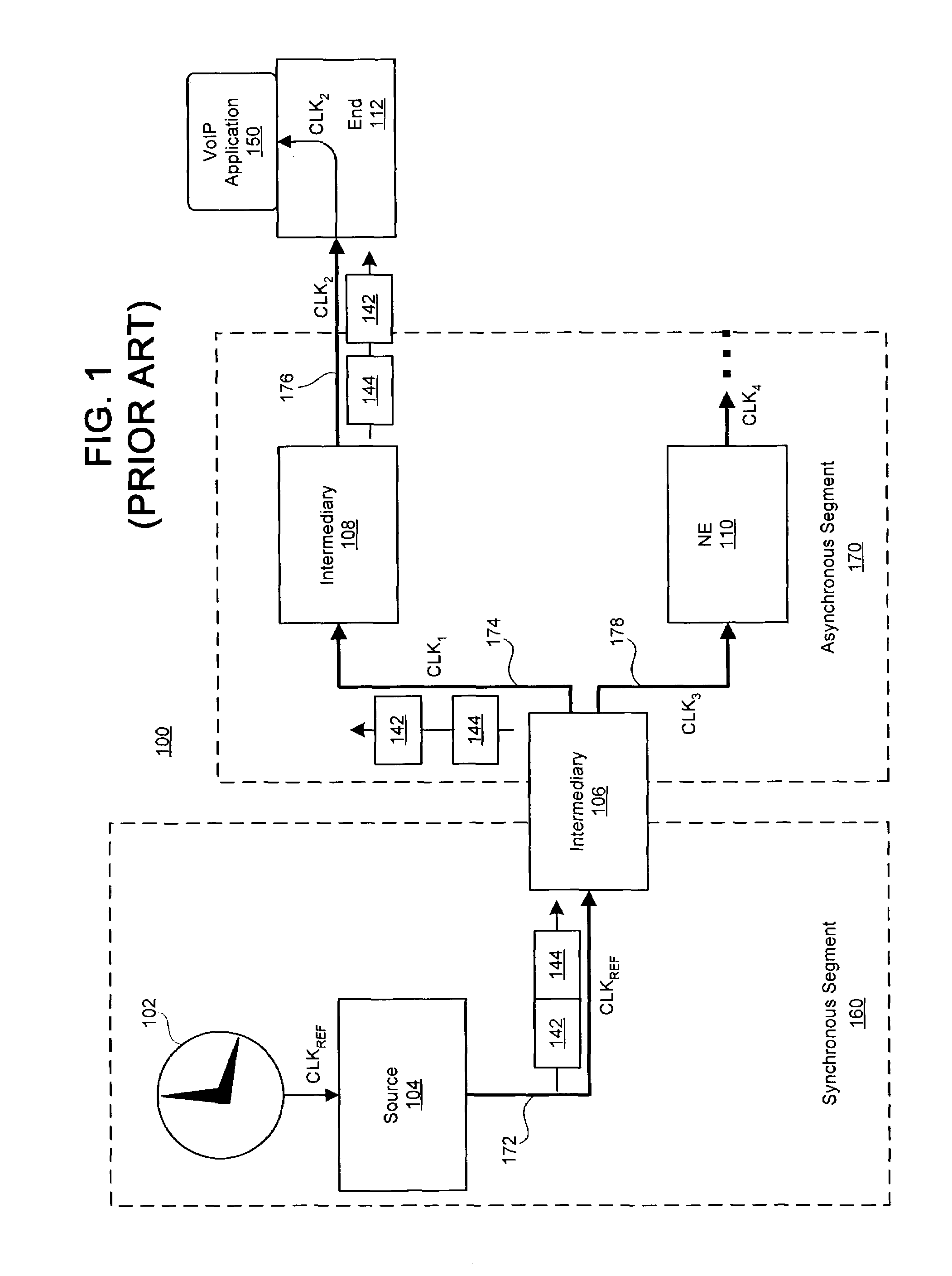Method and system for link-based clock synchronization in asynchronous networks
a technology of asynchronous networks and clocks, applied in the field of clock synchronization in networks, can solve the problems of complex timing problems difficult to properly utilize synchronous data at the receiving network device, and disadvantages of asynchronous networks when used to transmit synchronous or real-time data
- Summary
- Abstract
- Description
- Claims
- Application Information
AI Technical Summary
Benefits of technology
Problems solved by technology
Method used
Image
Examples
Embodiment Construction
)
[0023]FIGS. 2-6 illustrate exemplary techniques and systems for clock synchronization in networks having one or more asynchronous data links. In at least one embodiment, a clock signal is propagated at the physical layer of asynchronous data link(s) between a source network device and a destination network device. Each device between the source network device and the destination network device, in one embodiment, is adapted to receive an incoming clock signal from a previous network device and then provide a signal synchronized to the incoming clock signal to the next network device. At the same time, each network device of the asynchronous segments of the network can continue to transmit packets of data asynchronously. By locking the link-based frequency on a per link-basis, the receiver clocks located at the edge of a network can be directly tied to a primary source located in the core network.
[0024]Clock synchronization techniques in accordance with at least one embodiment of th...
PUM
 Login to View More
Login to View More Abstract
Description
Claims
Application Information
 Login to View More
Login to View More - R&D
- Intellectual Property
- Life Sciences
- Materials
- Tech Scout
- Unparalleled Data Quality
- Higher Quality Content
- 60% Fewer Hallucinations
Browse by: Latest US Patents, China's latest patents, Technical Efficacy Thesaurus, Application Domain, Technology Topic, Popular Technical Reports.
© 2025 PatSnap. All rights reserved.Legal|Privacy policy|Modern Slavery Act Transparency Statement|Sitemap|About US| Contact US: help@patsnap.com



